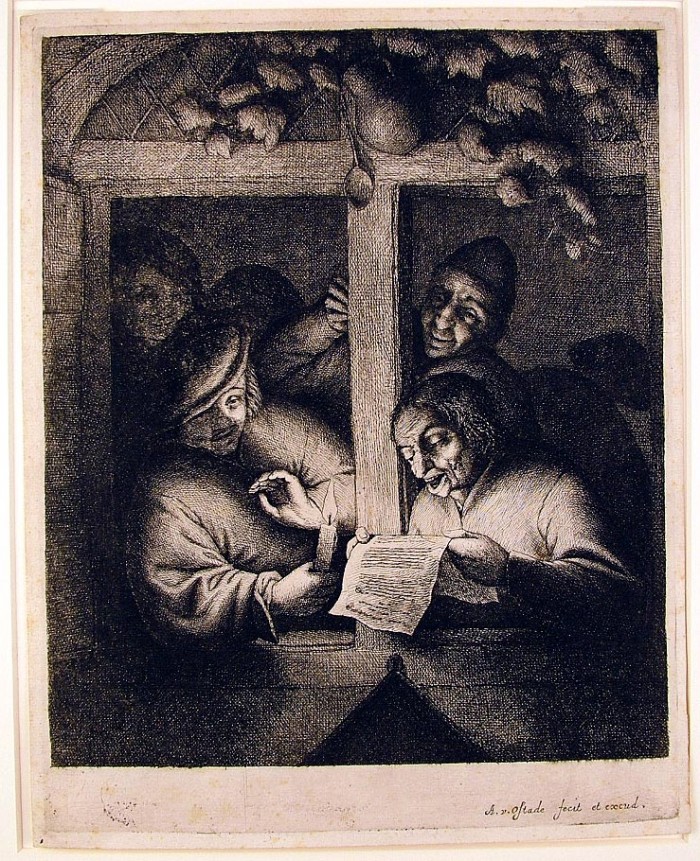The Singers – 4th State

Adriaen Van Ostade, The Singers, circa 1668, etching. References: Godefry, Hollstein 19. The fourth state (of seven). In very good condition. With the inscription on the plate [A. v. oftade fecit et excud.]. With margins, 9 7/16 x 7 15/32, the sheet 9 3/4 x 7 3/4 inches. On old laid paper with the Fleur de Lys in Crowned Shield watermark, a variant of the several comparable watermarks cited by Godefry as characteristic of the early impressions.
Provenance: J. Danser Nyman, sale Amsterdam, March 19, 1798, to Hendriks [Knoedler Gallery, New York (Lugt 2007)]; Martin Carlsson, Stockholm; George Bjorklund, Stockholm, acquired from him on August 18, 1966 by Dr. S. W. Pelletier (with his stamp [twice] verso). Inscribed in graphite by J. Danser Nyman verso, also by another unidentified collector [OE] in violet ink verso. (This is the earliest state impression of this print collected by the eminent Van Ostade collector Dr. S. W. Pelletier.)
A fine richly printed impression in black ink with plate tone, with superb contrasts – a fine example of Van Ostade’s use of chiaroscuro – on ivory laid paper. This state shows Van Ostade’s signature bottom right, and the three very tiny vertical strokes across the border above the jug at the top, before the further shading above.
It is of course only in the early, lifetime impressions that Van Ostade etchings can be fully appreciated. Additional printings were made posthumously; this is the fourth state; the Picart (posthumous) edition was made in the sixth state (not the fifth, as noted by Godefry). Godefry described impressions of this state as “rare.”
The Singers is one of Van Ostade’s most important and impressive works. It shows four singers, three of whom are highlighted by the candlelight held by the man at the left; a fourth man is in the shadows upper left, and other shapes, suggesting figures, lurk in the background as well.
The Singers probably depicts members of a rhetorical group; these groups were common in The Netherlands during the late 15th and 16th centuries (there were two in Haarlem at the time, and many local artists such as Frans Hals and Esaias van de Velde, were members). Their members presented public readings, plays, and sponsored literary competitions. Jan Steen created well-known paintings of such a group (at Worcester and Philadelphia), probably after Van Ostade’s conception. Van Ostade as well made several drawings and a watercolor on the subject, and probably at least one painting (now lost). The triangular shape at the bottom of the etching is surely the upper half of a “blazon” or coat of arms that these rhetorical groups used to identify themselves.